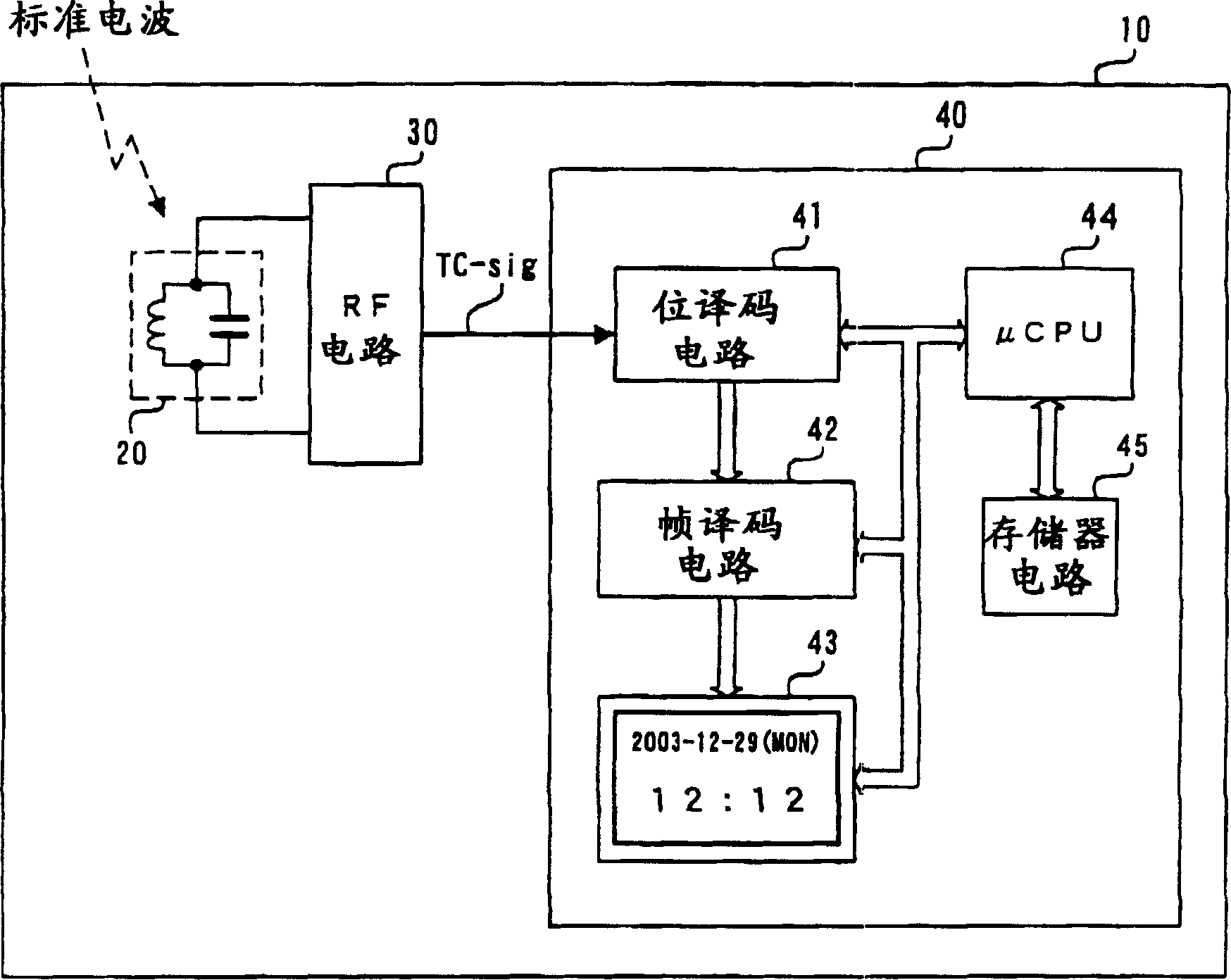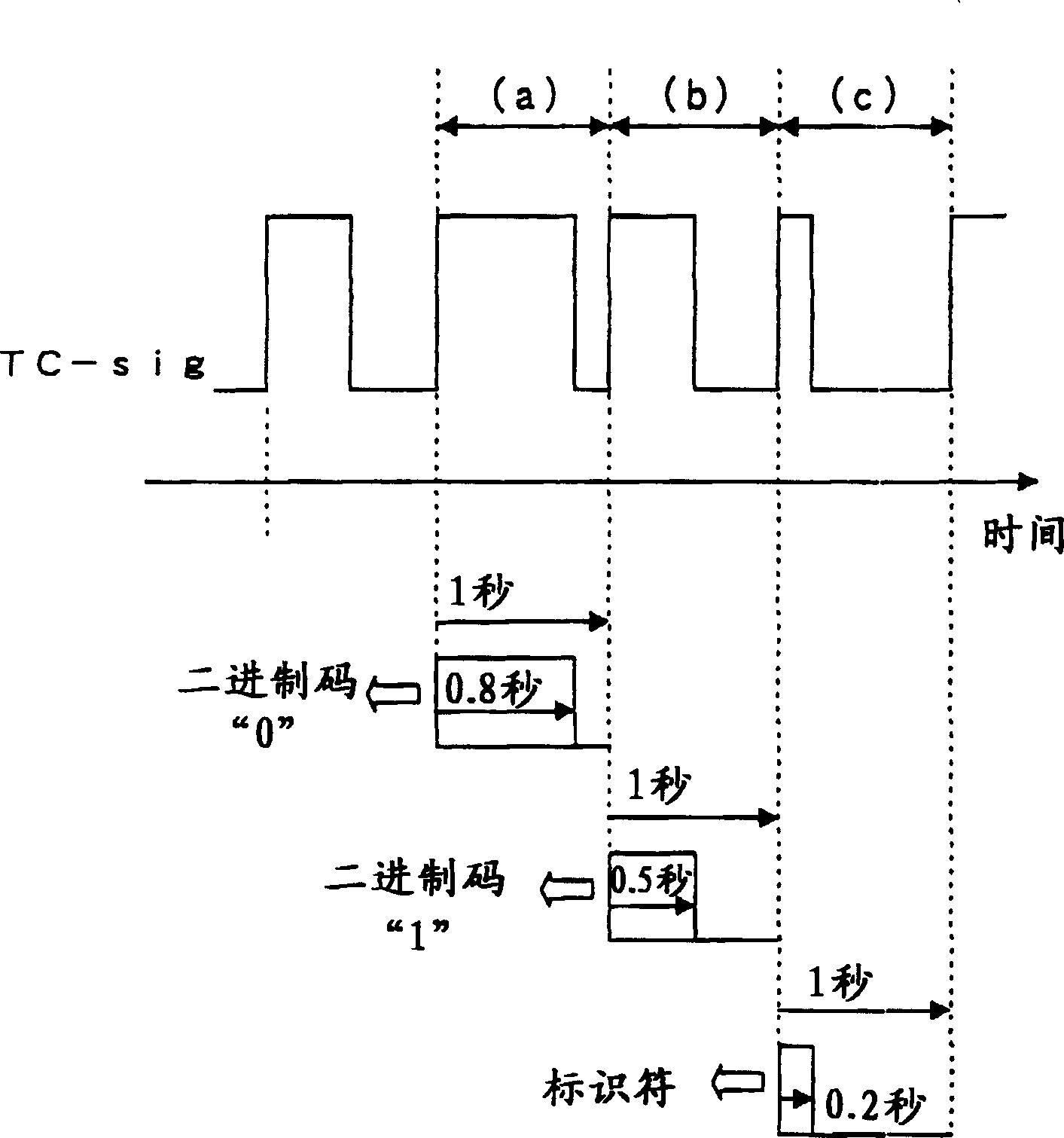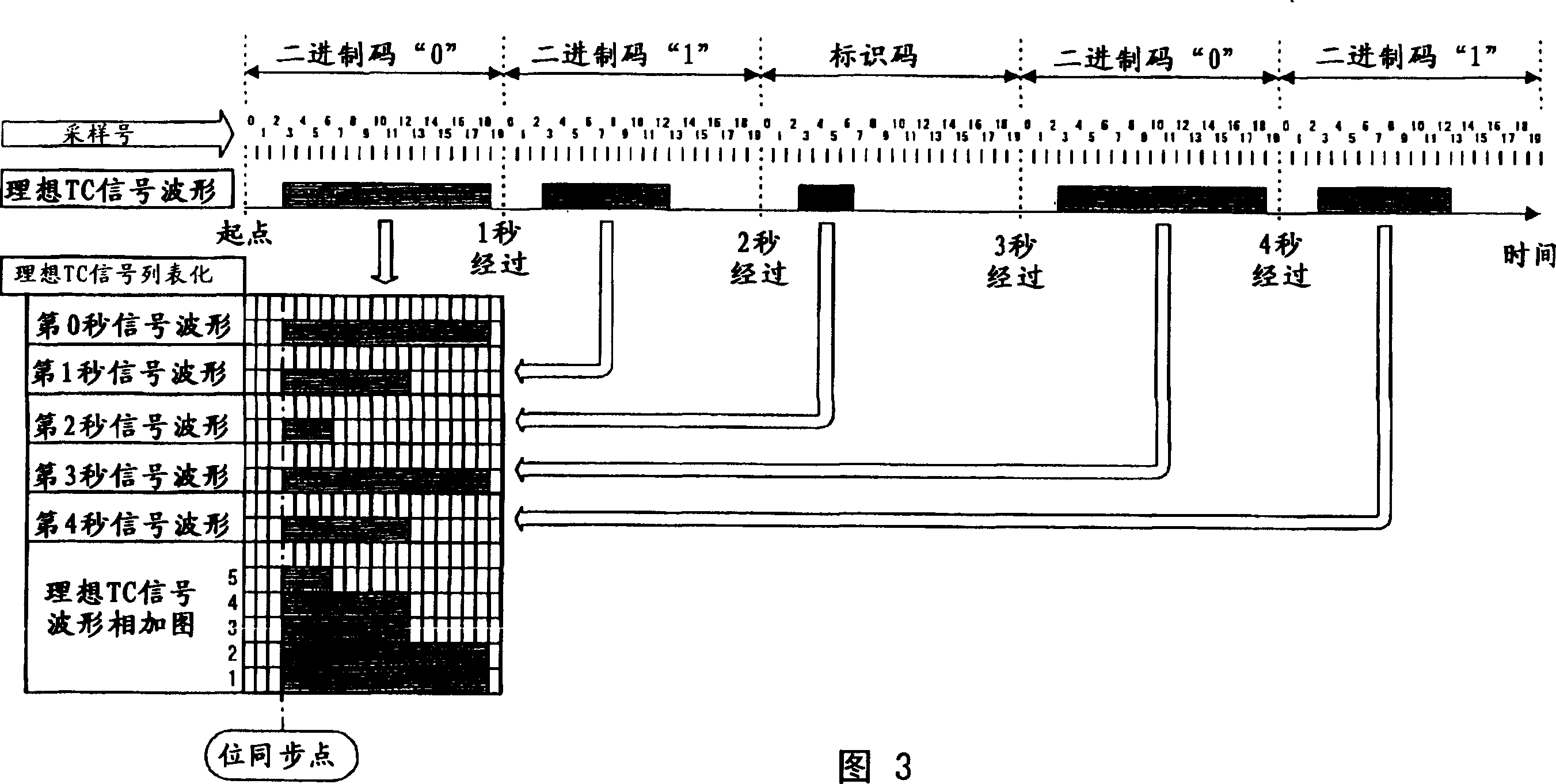Standard time signal receiving time device and decoding method of time code signal
A technology of standard radio waves and clock devices, applied in synchronizing devices, electronic timers, electromechanical clocks, etc., can solve the problems of increased calculation amount, increased product cost, and increased power consumption.
- Summary
- Abstract
- Description
- Claims
- Application Information
AI Technical Summary
Problems solved by technology
Method used
Image
Examples
Embodiment 1
[0041] according to figure 1 The block diagram shown illustrates a first embodiment of the radio controlled clock and time code decoding method of the present invention. The purpose of this embodiment is to achieve correct bit synchronization of the code pulses contained in the time code signal.
[0042] Based on the radio wave clock 10 of this embodiment such as figure 1 As shown, it is mainly composed of an antenna 20 , a high frequency circuit 30 and a main processing circuit 40 . The main processing circuit 40 includes various circuits such as a bit decoding circuit 41 , a frame decoding circuit 42 , a display circuit 43 , a microprocessor 44 and a memory circuit 45 . In addition, although the radio-controlled clock 10 includes other circuits such as a power supply circuit and an operation input circuit, description and description of these circuits are omitted because they are not directly related to the present invention.
[0043] Next, each component of the radio-con...
Embodiment 2
[0058] Next, a second embodiment of the present invention will be described. The configuration of the radio-controlled timepiece of the second embodiment is the same as that of the first embodiment, so description and description of the configuration will be omitted.
[0059] The purpose of this embodiment is to prevent the normal decoding of each code from being hindered by noise mixing or waveform distortion. That is, the purpose of this embodiment is to reliably decode each code of 1 bit included in a time code signal into each code of a binary "0", a binary "1" or an identifier. In addition, as a prerequisite for realizing this embodiment, it is necessary to implement the bit synchronization method described in the first embodiment and to tabulate the sampling data of the time code signal established by the bit synchronization.
[0060] First, use Figure 5 The basic concept of this embodiment will be described. Figure 5 (a) represents the data of binary "0" after samp...
Embodiment 3
[0068] Next, a third embodiment of the present invention will be described. The configuration of the radio-controlled timepiece of the third embodiment is the same as that of the first embodiment, so description and description of the configuration will be omitted. In addition, as a premise for realizing this embodiment, it is assumed that the bit synchronization method described in the first embodiment is implemented, and the sampling data of the time code signal established by bit synchronization is tabulated, and the template pattern of the second embodiment is implemented. Code judgment method (hereinafter referred to as "simple bit pattern judgment").
[0069] Furthermore, the purpose of this embodiment is to prevent the normal decoding of each code from being hindered by noise or waveform distortion, and to further improve the code determination capability described in the second embodiment.
[0070] In the decoding method for simple bit pattern determination of the sec...
PUM
 Login to View More
Login to View More Abstract
Description
Claims
Application Information
 Login to View More
Login to View More - R&D
- Intellectual Property
- Life Sciences
- Materials
- Tech Scout
- Unparalleled Data Quality
- Higher Quality Content
- 60% Fewer Hallucinations
Browse by: Latest US Patents, China's latest patents, Technical Efficacy Thesaurus, Application Domain, Technology Topic, Popular Technical Reports.
© 2025 PatSnap. All rights reserved.Legal|Privacy policy|Modern Slavery Act Transparency Statement|Sitemap|About US| Contact US: help@patsnap.com



